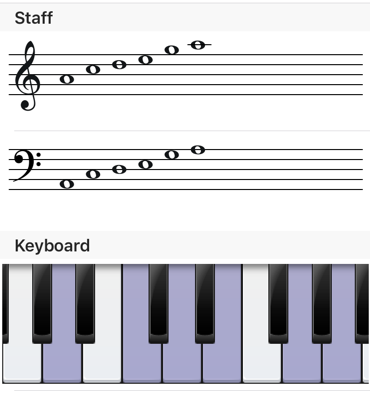This time we will get some new resources to our composition toolbox. We will learn how to focus the creation of an instrumental solo – be it for guitar, piano, bass or any other instrument. But enough talk, let’s check it out!
The Resources
The musical resources we are going to discuss can be applied to any genre or style you like, because they won’t affect the singularities of any of them. You can list them in this way:
- Arpeggios
- Thirds & Sixths
- Passing Tones
- Chord/Scale relationship
The most important thing to keep in mind is that all of them work within the harmony; this means you have to use them being careful of the chord tones! That’s it! 4 powerful tips will really get you to start developing really nice signature solos for you. Let’s get into the details:
1. Arpeggios
Arpeggios are the way in which chords are broken into their chord tones and rearranged. Let’s take the following chord progression for example:
And break it into their chord tones:
Bm: B – D – F#
F#: F# – A# – C#
A: A – C# – E
E: E – G# – B
G: G – B – D
D: D – F# – A
Em: E – G – B
This is the chord progression for Hotel California by The Eagles. When you take those notes and combine them in a creative way, playing along with the chords behind, you get an epic solo! Check it out:
Thanks to YouTube user hutgreen for his great performance!
The arpeggios start at 1:29, take a good look at how only the chord tones are used during each change of the harmony behind it.
2. Thirds & Sixths
When you already have a melody and you’d like to add some interest to it, or you’d like to sound fresh and can’t-go-wrong in terms of harmony, using thirds and/or sixths below or above the melody will be an excellent choice. Thirds and/or sixths tend to sound good because they are consonant with the notes they part from.
If you’re doing a run like the B – D – B – A – G like the one at 1:18, and add up the thirds below them: G – B – G – F# – E, you will get a beautiful harmonization of the main melody!
3. Passing Tones
If all the melodies were based entirely in chord tones it would be really dull doesn’t it? So we will add some “outside” notes that will color our solo adding a singing quality to it! How? Just place one note “passing” between two chord tones! Let’s see another example:
At 2:46 the solo starts with a G – C – B and a C major chord behind it. The B note doesn’t belong to the C major chord tones’ but hitting it right after a note that does adds a nice color effect. Then it goes C – D – E behind a C major chord again, the D note keeps the melody singing!
4. Chord/Scale Relationship
Remember all those scale patterns you learned? Major scales, minor scales, minor pentatonic scales? It’s time to put them to use!
The ideal way to use those patterns is to apply the one that contains the notes of the chord we are playing above and experiment with different rhythms and positions! For those piano players out there: let’s take the A minor pentatonic pattern from Piano Companion as an example:
The notes are, from left to right: A – C –D – E – G – A and it repeats again on the remaining keys.
Check out how the Stairway to Heaven solo starts at 0:13 using E as the first note (chord tone of A minor) and A as the closing one at 0:16. Both notes right on the pentatonic pattern you already know, but giving relevance to the chord tones!
Now that you own these awesome resources it’s time to create your perfect solo using Songtive! Get your melody tool and use the Piano Companion tool to experiment with the music I am sure is sounding in your head!

